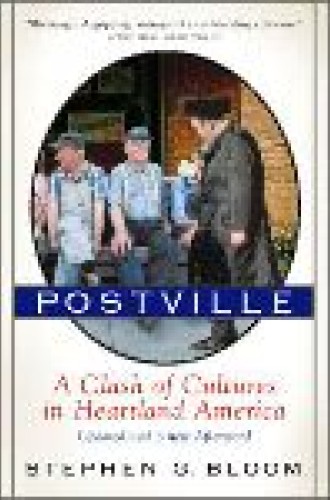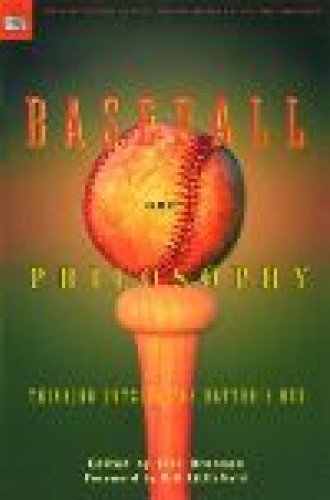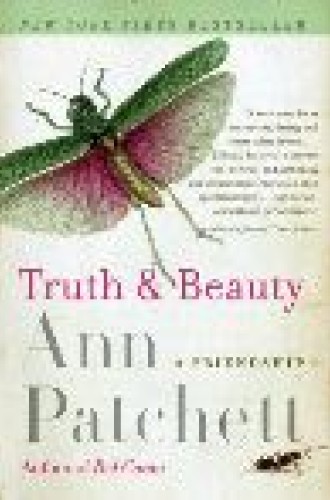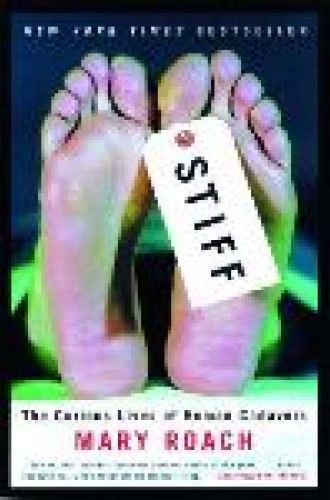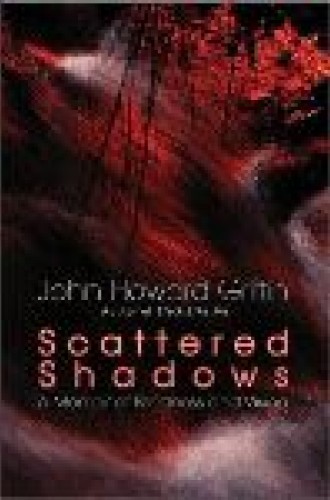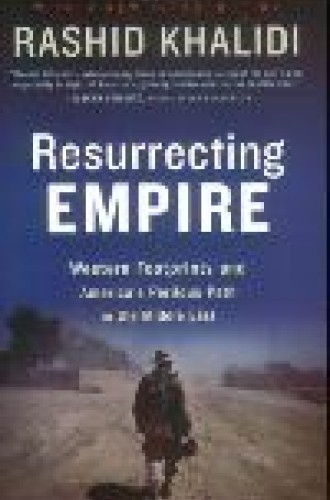Summer picks
If you are searching for a book to take along on summer travels, or simply for an excursion to the back porch, the editors have some recommendations:
Debra Bendis: Colm Tóibín’s fictional biography of Henry James, The Master (Scribner), is a convincing re-creation of the novelist’s life and artistic zeal. It conveys empathy both for “the master’s” commitment to writing and for his extreme and often painful (for him and others) detachment from relationships.
With a convincing mix of research and imagination, Tóibín displays the James family in all its glory: the volatile, brooding Henry James Sr., who was constantly uprooting his family; older brother and star intellectual William James; sister Alice, whose sharp intelligence apparently had no outlet except in the illnesses that led to her death at 42. The experience of surviving long after parents, siblings and peers succumbed to disease or war may have exacerbated James’s emotional isolation.
In social settings, James was a quiet, guarded guest who would parry a question or sit silent in the midst of conversations. Rather than revealing anything, he listened. James was often seen as passionless, and was accused more than once of neglecting those he claimed to love. His self-imposed isolation extended to romantic involvements, which he declined, and may have led to the betrayal of his closest friend, novelist Constance Fenimore Woolson, whose despondency led her to suicide after James canceled plans to move closer to her.
Tóibín understands that James guarded his privacy because he lived for his art. He turned down emotional engagement in order to create. He would reimagine conversations the next morning as he began his day of writing. Those who had been with him might find, as they read his books and stories, that he had appropriated with uncanny astuteness the traits and personalities of everyone in the room, intuited their crises and dilemmas, and recast them into fiction.
John M. Buchanan: A friend handed me a book a while ago and said something like: “You won’t think so at first, but you will love this book.” Postville: A Clash of Cultures in Heartland America (Harvest Books), by Stephen G. Bloom, is the unlikely, fascinating story of a group of Lubavitchers, an Orthodox and zealous Jewish sect, who open a kosher slaughterhouse outside Postville, Iowa (population 1,465). The business becomes a success and Postville’s initial hospitality turns into suspicion and anger. It is a good human-interest story, but it is also about community and cultural diversity.
The Dignity of Difference: How to Avoid the Clash of Civilizations (Continuum International), by Jonathan Sack, Britain’s chief rabbi, is a carefully researched and very readable counterpoint to Samuel Huntington’s The Clash of Civilizations.
We are midway through the baseball season and there are lots of good books on the subject, beginning with The Teammates (Hyperion). David Halberstam describes the extraordinary friendship between four Boston Red Sox players that began during their playing days in the 1940s and ’50s. And who could resist Baseball and Philosophy (Open Court), an anthology of “out of the batter’s box” essays edited by Eric Bronson, with titles like “The Ethics of the Intentional Walk,” “Socrates at the Ballpark” and “Baseball, Cheating, and Tradition: Would Kant Cork His Bat?” Michael Lewis’s Moneyball: The Art of Winning an Unfair Game (Norton) is by my bedside. The author suggests that winning is not merely a matter of having the highest payroll—something that Billy Beane, general manager of the Oakland Athletics, seems to understand best.
Trudy Bush: Though it’s a memoir, Ann Patchett’s Truth & Beauty (HarperCollins) has many of the qualities of excellent fiction—unforgettable characters, a dramatic plot recounting a heroic struggle, love put to the test, and a bittersweet ending. It’s the story of Patchett’s friendship with Lucy Grealy, whom she got to know at the Iowa Writer’s Workshop. Grealy had lost part of her jaw to childhood cancer, and most of her teeth to a long series of unsuccessful surgeries. She had intelligence, wit and charm, as well as the conviction that she would redeem her suffering by becoming a noted writer.
Patchett, best known for the novel Bel Canto, uses the fable of the grasshopper and the ant to characterize their 20-year friendship. Grealy was the grasshopper: she had enormous vitality, capacity for friendship and appetite for life, but was given to bouts of loneliness, depression and despair. Patchett was the ant: responsible, capable and steady.
The book is in part the story of writers’ lives—about the competition for fellowships, prizes and publishing successes. The disciplined Patchett succeeded at the craft first, steadily publishing her novels. Grealy had a brief moment of fame with The Autobiography of a Face.
Patchett quotes extensively from Grealy’s letters, which evoke a vivid sense of the writer’s personality. But the book turns dark as Grealy’s surgeries continue (she had 38) and as Patchett finds herself unable to save her friend from drug addiction and self-destructiveness. This is a moving account of a complex, difficult and rewarding relationship of unusual closeness and perceptiveness.
Jason Byassee: “This is a book about notable achievements made while dead,” explains Mary Roach at the opening of Stiff: The Curious Lives of Human Cadavers (Norton). We all know the ordinary destinations for bodies of the deceased: interment in some form or donation to science. Now we know the details.
Cadavers do more than help future doctors in gross anatomy lab. They also improve car safety. They provide forensic clues in murder cases and plane crashes. They help improve police safety by taking bullets and being blown up. Most surprisingly, they are the source of comedy. They evoke not mockery, but the profound realization that human bodiliness has about it a sort of absurdity. “Life contains these things: leakage and wickage and discharge, pus and snot and slime and gleet. We are biology. We are reminded of this at the beginning and the end, at birth and at death. In between we do what we can to forget.”
These most fleshy moments are also our most religious ones. One chapter details debates on precisely how victims of crucifixion die. Older eras in Christendom saw to it that we were buried whole, well dressed, ready to pop from the grave at the judgment. Today we are more likely to offer our bodies to science, or to become compost for a memory tree, or to be plasticized and made into an art exhibit. Those are not bad alternatives to the pollution caused by cremating people who have, as most of us do, mercury-based fillings in their teeth. Who knew?
Roach refers to the dead who become objects of research as “superheroes: they brave fire without flinching, withstand falls from tall buildings and head-on car crashes into walls. You can fire a gun at them or run a speedboat over their legs, and it will not faze them. Their heads can be removed with no deleterious effect. They can be in six places at once.”
Roach justifies her work by claiming the voyeuristic instincts of a journalist. Her wise glance and wicked humor point to a truth Christians know in their bones—that death is absurd, that its comedy is finally shown by a God who triumphs over it by tasting it personally, by saving through dying. God’s last laugh is here given an unwitting premonition.
David Heim: Monty Python meets St. Benedict—and St. Benedict wins, eventually. That’s the drama of Father Joe: The Man Who Saved My Soul (Random House), Tony Hendra’s witty but heartfelt book about his friendship with a Benedictine monk.
Hendra was at the center of the comedy world of the 1970s and ’80s, working with figures like John Belushi and John Cleese (of Monty Python). He was one of the first editors of the National Lampoon, and he appeared in the mock documentary on rock music This Is Spinal Tap. Not surprisingly, his book displays a lot of comic flair.
He’s got some good material to work with. He met Father Joe at age 14 after he had become sexually involved with a married woman and was taken by the aggrieved husband for a weekend consultation at a Benedictine abbey. Hendra expected punishment, or at least a withering cross-examination. Instead, he encountered the serene love of Joseph Warrilow, an unassuming, big-eared man who held Tony’s hand and kept calling him “dear.” Here was an embodiment of divine hospitality. Or as Hendra puts it: “Gentleness and goodness came off him like aftershave.”
Father Joe’s God was nothing like the God Hendra had met in catechism class. He was “gentle, generous, endlessly creative . . . who felt his joy and our joy deeply, who could be hurt just as deeply but would never give up on you, who showered you with gifts and opportunities whether you acknowledged them or not, who set you tasks but didn’t abandon you if you failed them.”
Hendra was drawn to the man and his faith, but this yearning remained a subtheme of his life, a hypothetical alternative to a self-absorbed career that was full of laughs but short on joy. The book is partly a mea culpa on Hendra’s part for evading Father Joe’s wisdom. He’s made up for a lot with this book, which displays once again that the lives of the saints are the best recommendations of the faith.
Richard A. Kauffman: During World War II, John Howard Griffin (best known as the author of Black Like Me) was assigned to the South Pacific, where he was injured by a Japanese bombardment. Over a period of several years he went blind from his injury and was temporarily paralyzed. While going blind he experienced a spiritual reawakening and became a Catholic—having earlier rejected Christianity and the Episcopal Church in which he was reared in Texas. Scattered Shadows: A Memoir of Blindness and Vision (Orbis) is Griffin’s account of his blind years, published posthumously.
One of the most moving episodes is Griffin’s account of an overnight stay with a blind beggar in Tours, France, who warned Griffin that the worst part of being blind is “the loneliness and the ungodly stupidity of sighted people,” who want you to be taken care of and out of sight. “A blind man needs a great friendship even more than he needs a woman,” the old man said.
Griffin thought he should have been killed by his wartime injury. He felt that he had been given a second life and so should make the most of it. “A life without sight was as interesting as a life with sight,” he said. He was not going to allow himself the role of a tragic victim, no matter how much sighted people tried to treat him that way.
Griffin first took up farming. Then he discovered his literary talent and launched a writing career. Griffin married a sighted woman, with whom he eventually had four children. After the second child arrived, something miraculous happened: his sight began to come back.
Griffin seems to have been more distraught about recovering his sight than about losing it. He agonized over what this change would do to other blind folk, and he promised himself he would never forget them, nor would he ever again take sight for granted. Looking at himself in the mirror after ten years was a shock: he had forgotten what he looked like. His account of seeing his wife and children for the first time—people who would have seemed like strangers if they walked up to him in the street—is touching.
Griffin, who died in 1980, worked on part of this memoir as he was going blind. The other parts were cobbled together from his essays and journals. The last part of the book consists mostly of journal entries, which unfortunately lack the perspective of earlier sections.
James Wall: For stimulating and informative reading, I recommend Rashid Khalidi’s Resurrecting Empire: Western Footprints and America’s Perilous Path in the Middle East (Beacon). Khalidi directed the University of Chicago’s prestigious Middle East Institute before moving to Columbia University to head a similar institute and to fill the chair named in honor of a noted Palestinian scholar, the late Edward Said. Resurrecting Empire offers an overview of Middle East history, cutting through the media fog on the subject. For Khalidi, the Middle East (a Western term) stretches from the Atlantic to the Caucasus, and includes countries where—except for Israel, Turkey and Iran—the majority populations speak Arabic. At times the designation also covers Afghanistan.
Khalidi contrasts the Orientalist perspective—seeing the region entirely through Western eyes—with the perspective of the people who live there. Colonial and economic exploitation of the Middle East, carried out under the guise of “spreading democracy” and promoting “superior” Western values, is deeply offensive to a people who have had centuries of cultural development, rooted in Islam.
Imperialism is a temptation major powers rarely resist, though they use cover stories regarding threats (terrorism) and high ideals (altruism) to justify their actions and help their citizens overlook the violations of liberal values. Khalidi cites many of the cover stories the West has used and continues to use.
Khalidi is passionately committed to explaining the region. I will draw on this work a great deal in preparing a series of lectures for churches. I think I will call the series “Peace and Justice in the Middle East from a Non-Orientalist Perspective, Courtesy of Rashid Khalidi; Knowledge of Arabic Not Required but Recommended.”



